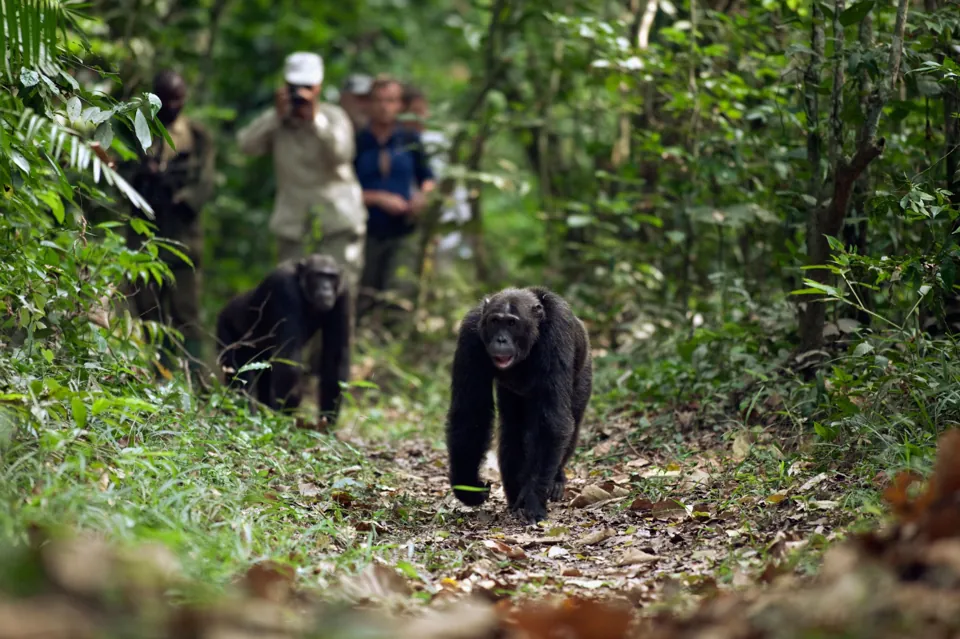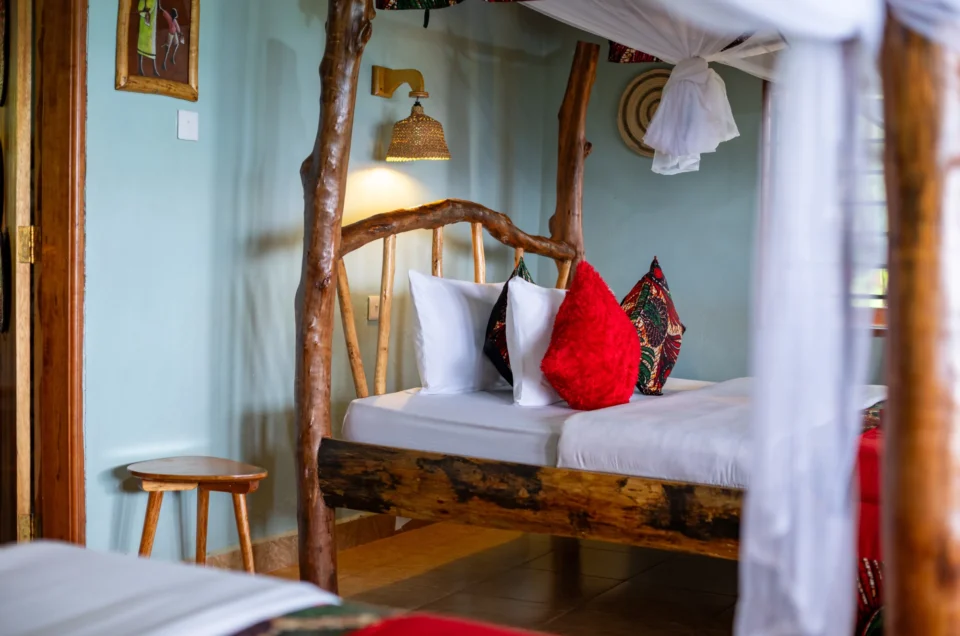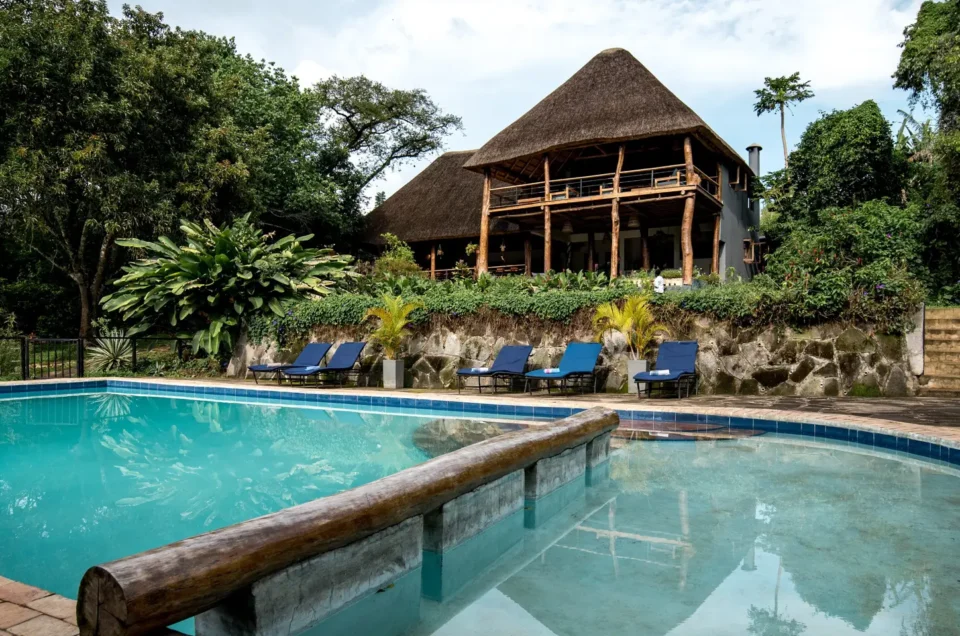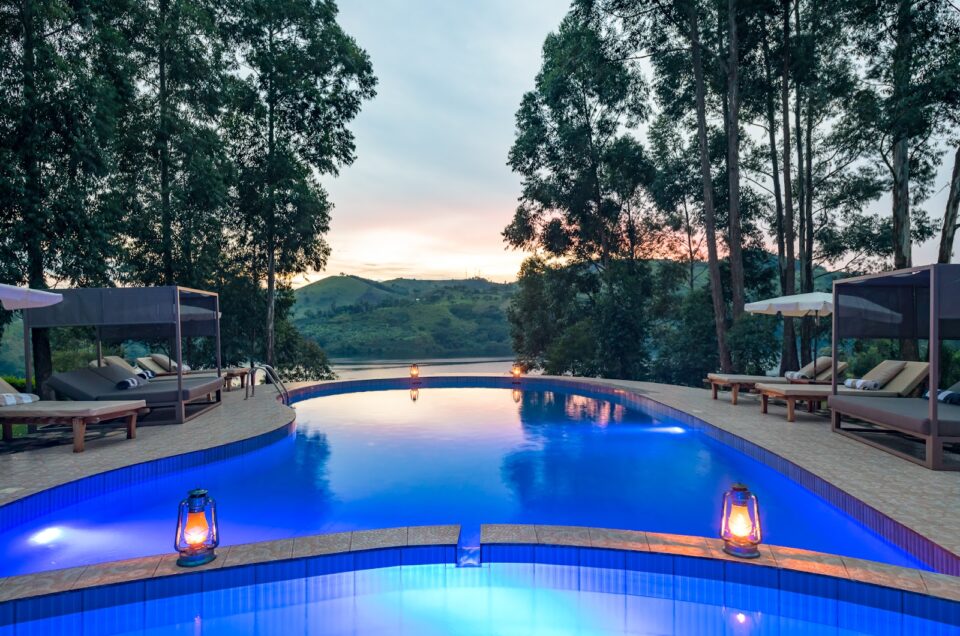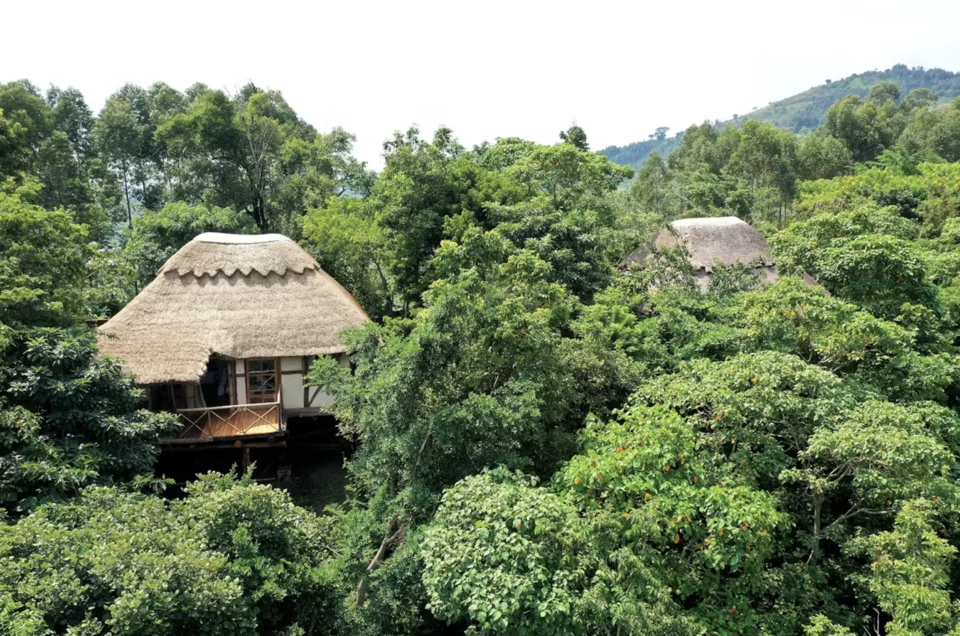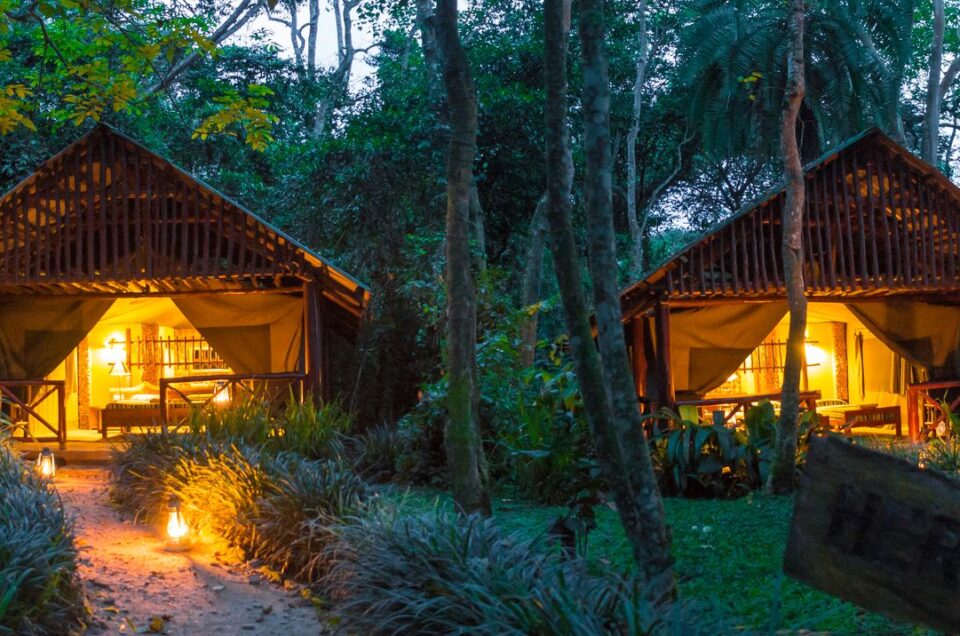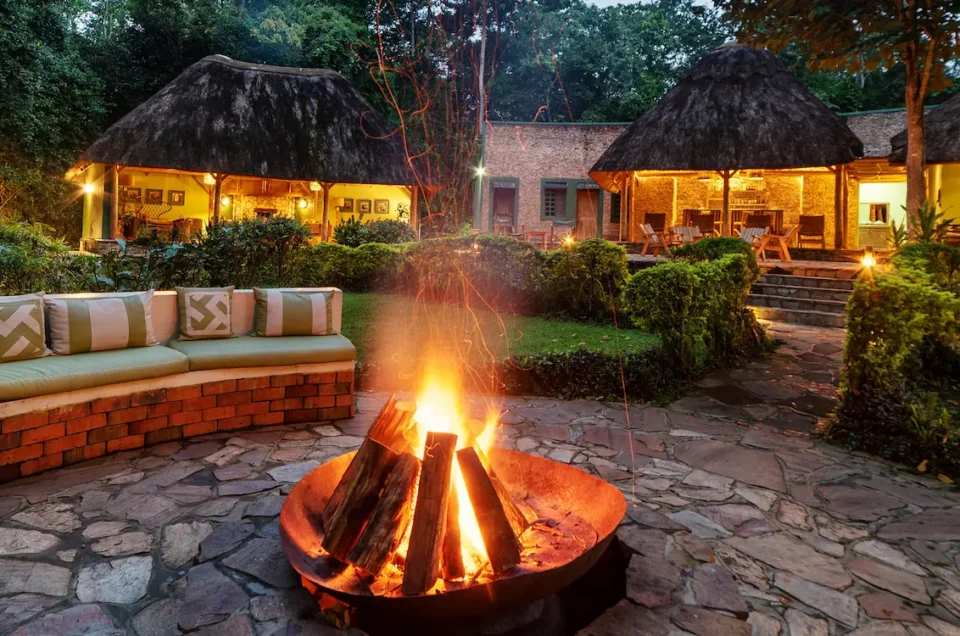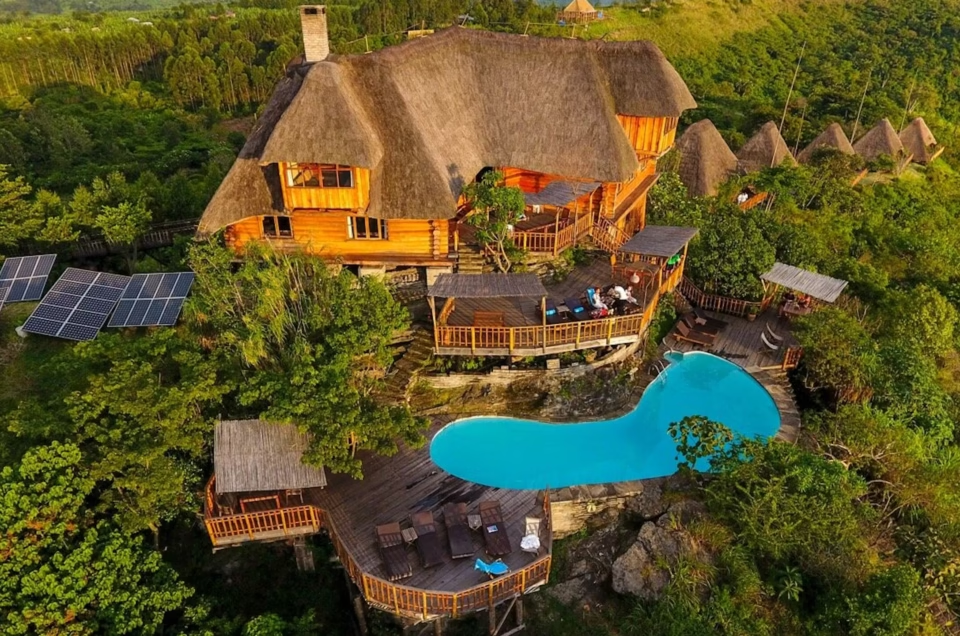Frequently asked questions
How does chimp trekking in Uganda compare to other countries?
Several African countries offer chimp trekking, but Uganda is the most popular place to do it.
Most visitors to Uganda include at least one chimp trek in their trip. There are many locations to choose from, and it’s easy to add the activity to any itinerary. The best-known spot is Kibale Forest.
In Tanzania, you can trek chimps in Gombe and Mahale Mountains National Parks, along Lake Tanganyika.
These are beautiful, remote destinations that offer a very special experience—but reaching them can be expensive or take a lot of time. That’s why fewer people trek chimps in Tanzania compared to Uganda.
Rwanda also has chimp trekking in Nyungwe National Park, a beautiful high-altitude rainforest that’s home to 13 primate species. The park is worth visiting for its scenery, hiking trails, and wildlife.
Seeing chimps here can be trickier, but when you do, it’s a real treat.
How do a chimp trek and a gorilla trek in Uganda compare?
Uganda chimpanzee trekking is often overlooked compared to gorilla trekking, maybe because gorillas are so huge and impressive. But the two experiences are actually quite similar.
For both, you start with a safety briefing, then head into the forest in a small group. When you find the primates, you get about an hour to watch them.
The big difference is how they behave. Gorillas are usually calm. The babies might play, but the adults mostly sit, eat, or rest. Chimps, on the other hand, are full of drama!
Their communities often split into smaller groups and then meet up again later. There’s always something happening — a fight for power, noisy youngsters, males guarding their territory, or even a hunt. This makes watching chimps very exciting, but it can also be more challenging.
Chimps are fast and move easily through the forest, while we have to work hard to keep up. They also spend more time high in the trees, which can make it harder to see them. Luckily, the guides do their best to get you a good view and some great photos.
And here’s another bonus: chimp trekking is much cheaper than gorilla trekking. Permits cost between $100 and $250, compared to the much higher price for gorilla permits ($800).
What fitness level is required?
You need to be reasonably fit for chimp trekking. Some days are easy, but other days can be harder. Chimps live in large areas, so sometimes you’ll find them in just 30 minutes, but other times it can take two hours of walking.
Once you find them, you spend an hour with them. Sometimes they sit and eat, but other times they move quickly through the forest — and keeping up with them can be a real workout!
This unpredictability is part of the adventure and makes the experience exciting.
No matter your fitness level, the right gear is important:
Good hiking shoes (for mud and uneven ground)
Light rain jacket (the forest can be wet)
Long trousers (to protect your legs)
Walking stick (helps on slippery slopes)
If you’re worried about the hike, you can hire a porter. They carry your bag (water, snacks, camera) and help you on tough sections of the trail.
Is chimp trekking in Uganda safe?
Yes — chimp trekking in Uganda is very safe.
The chimps are used to seeing people and know we are not a danger to them. Before you start, your guide will give you a safety talk. One important rule is to stay about 8 meters (26 feet) away from the chimps.
If you follow your guide’s instructions, there is nothing to worry about.
Uganda is also a safe country to visit. Crime in the national parks and reserves is very rare. Like anywhere in the world, there can be some crime in big cities, but if you travel with a good tour operator, you’ll be safe.
How much will this trip cost?
The cost of chimp trekking in Uganda depends on where you go.
In Kibale National Park, a permit costS US $250. Kyambura Gorge is the cheapest option aT US $100, while Kalinzu Forest Reserve and Budongo Forest each cost US $130.
If you book an organized tour, these permit fees are usually included in the total price.
A three-day trip that includes chimp trekking in Kibale starts at about US $950 per person.
A longer ten-day Uganda highlights tour — which includes chimp and gorilla trekking, plus safari drives in Queen Elizabeth and Murchison Falls — starts at around US $3,000 per person.
Prices can vary depending on the type of accommodation you choose.
Budget trips are the cheapest and may include shared camping or basic lodging. Mid-range tours include comfortable guesthouses, lodges, or simple tented camps. For those who want more comfort, there are luxury tours with beautiful, high-end lodges.
Are chimp sightings guaranteed?
Chimp sightings in Uganda are not 100% guaranteed because the chimps are completely wild.
They move around every day looking for food and build a new nest each night. Unlike gorillas, they don’t stay in one place, so seeing them can be a bit less predictable.
In Kibale National Park, your chances are very high — more than 90%. The guides and researchers there usually know where the chimps are. Kalinzu Forest is almost as reliable as Kibale.
Kyambura Gorge and Budongo Forest are a little less reliable, but even there, you have a better than 80% chance of finding them. And when you do, the experience is just as exciting and memorable.


